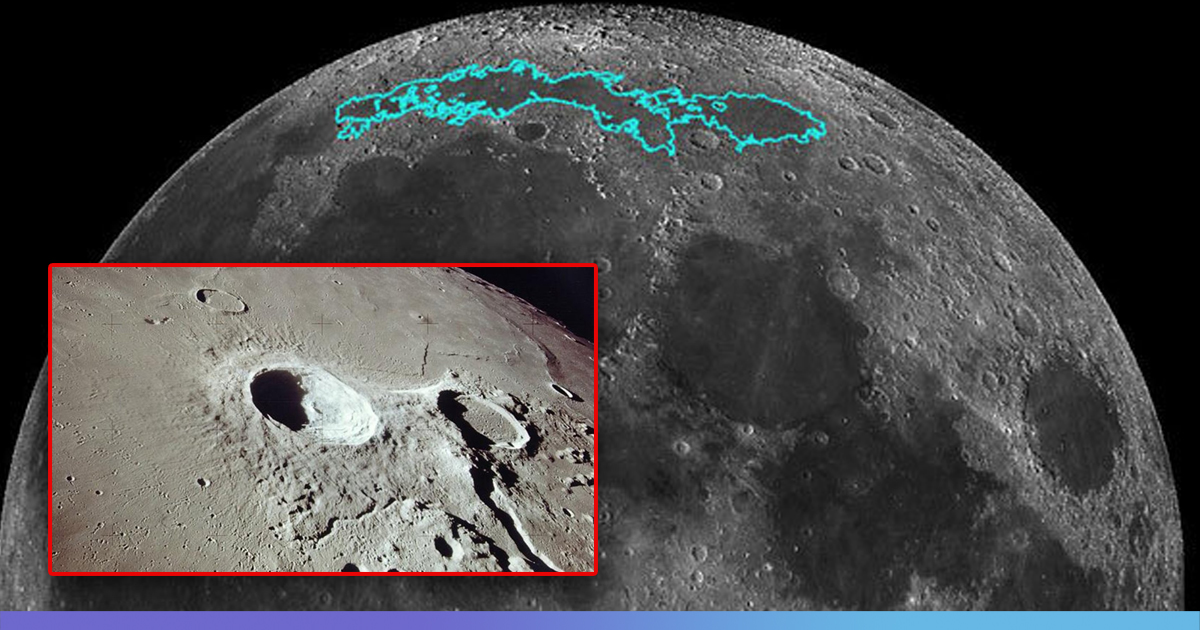In a shocking study, the images from Nasa’s Lunar Reconnaissance Orbiter has revealed that the Earth’s natural satellite- Moon is gradually shrinking, causing wrinkles on its crust and several moonquakes.
The researchers say that the Moon does not have any tectonic plates which can cause an earthquake, but it has been reporting several tectonic activities due to the gradual cooling down of the satellite’s interior. This has made the surface to wrinkle. Moon’s shrinking is causing the emergence of cliffs known as thrusts faults. This is happening because the Moon’s crust is not flexible, but brittle, causing the crust to break. Mare Frigoris, the lunar basin near the Moon’s north pole, which was believed to be dead from a geographical point of few is cracking and shifting.
As of now, there are thousands of cliff all over the Moon’s surface, which are few miles long and several yards high. Due to this continuous process, the Moon has shrunk 50 meters (150 feet) over millions of years. Scientists assert that the Moon is still shrinking and over the years they will get to know more about this.
How was the study conducted?
The scientist took the data from the seismometers (a device that responds to ground motions, such as caused by earthquakes, volcanic eruptions, and explosions) which was placed on the Moon during the Apollo 11, 12, 14, 15, and 16 missions. It was found out that during 1969 and 1977, there were 28 shallow moonquakes ranging from magnitude of 1.5 to 5 on the Richter scale. Then, researchers compared the location of the epicentres for those quakes with more than 12,000 orbiter images of the thrusts faults. It was found that of the 28 quakes, eight quakes were caused due to activity along the faults and not because of asteroids or the Moon’s interior movement. The researchers of the study believe that the Apollo missions over the past four to five decades have recorded the shrinking process of the Moon
Impressive discovery
John Keller, who is one of the authors of the study and is a Lunar Reconnaissance Orbiter project scientist at NASA’s Goodard Space Flight Centre said in a statement that it was brilliant how data from 50 years back were combined to advance the understanding of the Moon. He further said this study has made them plan their future missions to the Moon.
Nicholas Schmerr, another author of the study and assistant professor of geology at the University of Maryland, expressed his excitement on the result of the study and mentioned in a statement that faults producing moonquakes are different to that of Earth’s. He also mentioned that Apollo missions have helped scientists to learn more, but those missions have just touched the tip of the iceberg as he insisted that there should be more moon missions to understand Moon’s geology with the help of advanced seismometers. Supporting Schmerr’s idea, Renee Weber, co-author in a statement said that the new network of seismometers on the lunar surface should be the priority for Moon exploration and to understand Moon’s interior.
The study is published on May 14 in the journal Nature Geoscience.
Also Read: On The Far Side Of The Moon: China Becomes The First Nation To Sprout Seeds











